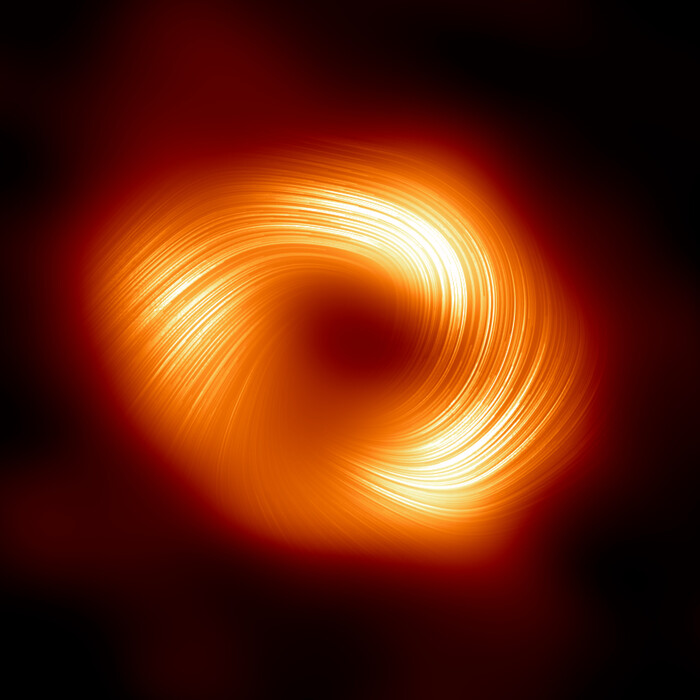The first visual evidence of a black hole, published in 2019. © Event Horizon Telescope (EHT) / dpa
A research team from London has succeeded in recreating a disk of matter in the laboratory that revolves around a black hole. In this way, fundamental questions are to be answered.
LONDON – Black holes are fascinating cosmic phenomena, but they are difficult to explore. Now, researchers from Imperial College London have developed an innovative method to replicate the immediate surroundings of a black hole on Earth. A black hole is surrounded by a so-called accretion disk, in which matter accumulates and becomes super-hot plasma. The plasma disk is subject to enormous forces: the centrifugal force pushes the plasma outwards, while the gravitational force of the black hole pulls the matter inwards. These forces keep each other in balance.
A long-standing question of research has been how black holes get bigger even though the material from their accretion disk does not fall directly into the black hole. One leading theory is that instabilities in the magnetic fields in the plasma cause matter to enter the black hole again and again. Until now, however, it has been difficult to test this theory. Previous experiments were carried out with liquid metals to which magnetic fields were applied. But these metals were in tubes and were therefore not an exact replica of the free-flowing plasma orbiting a black hole.
An accretion disk orbits a black hole – and is modeled in the laboratory
The research team led by Vicente Valenzuela-Villaseca has now used the Mega Ampere Generator for Plasma Implosion Experiments (MAGPIE) instrument to model a more accurate accretion disk. "If we understand how accretion disks behave, we can find out not only how black holes form, but also how gas clouds collapse to form stars, and even how we may be able to create our own stars by understanding the stability of plasmas in fusion experiments," Valenzuela-Villaseca explains in his university's statement.
By accelerating and colliding eight plasma jets, the research group succeeded in creating a rotating column of hot plasma. Although the experiment could only represent one revolution of the accretion disk, the researchers have already succeeded in gaining initial insights. The plasma moved faster the farther it was in the inner region of the rotating ring. The research group's experiment serves as a "proof of concept" and shows that further investigations are possible. For longer plasma pulses, magnetic fields could also be added to test how they affect friction in the system.
"We are only at the beginning of our possibilities to look at these accretion disks in a completely new way," Valenzuela-Villaseca emphasizes, adding: "This also includes our experiments and snapshots of black holes with the Event Horizon Telescope. This allows us to test our theories and see if they agree with astronomical observations."
Exploration of black holes: research is in its infancy
The first images of black holes using the Event Horizon Telescope, including the groundbreaking image of the black hole at the centre of our Milky Way, have shown the accretion disks around black holes. However, the research is still in its infancy, and the detailed study of these accretion disks can help to further unlock the mysteries of black holes and the processes taking place in the vastness of the universe.
0
Also Read
Surprising turn in space: "Trail of Stars" turns out to be something completely different
READ
Groundbreaking discovery in the asteroid belt – research is now faced with a new mystery
READ
What is inside the moon? New study solves old mystery
READ
Is the Earth orbited by a fragment of the Moon?
READ
NASA astronaut was convinced: "Aliens really exist" - and they have already visited us
READ
Fancy a voyage of discovery?
My Area
This article, written by the editors, used machine support. The article was carefully reviewed by editor Tanja Banner before publication.



